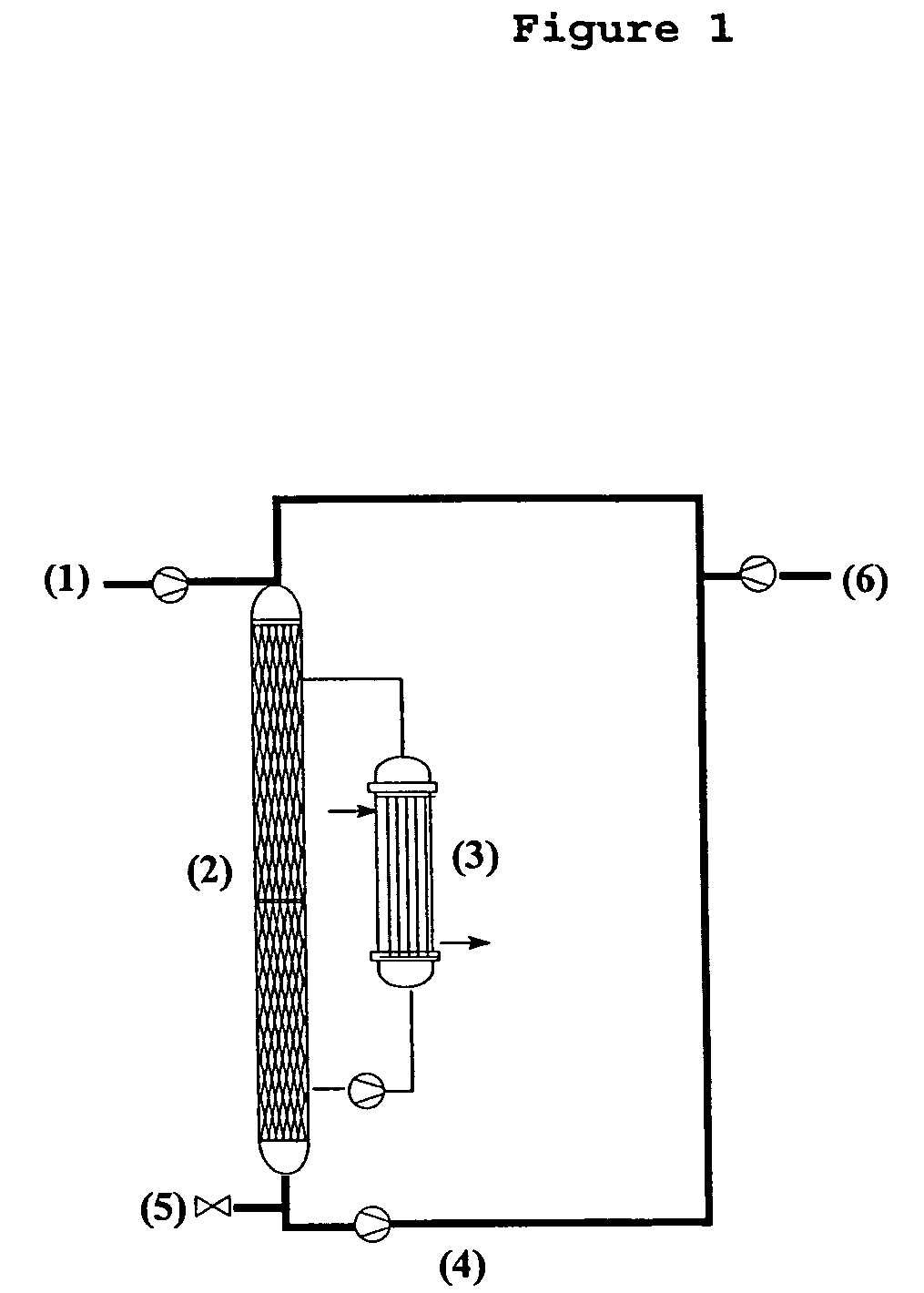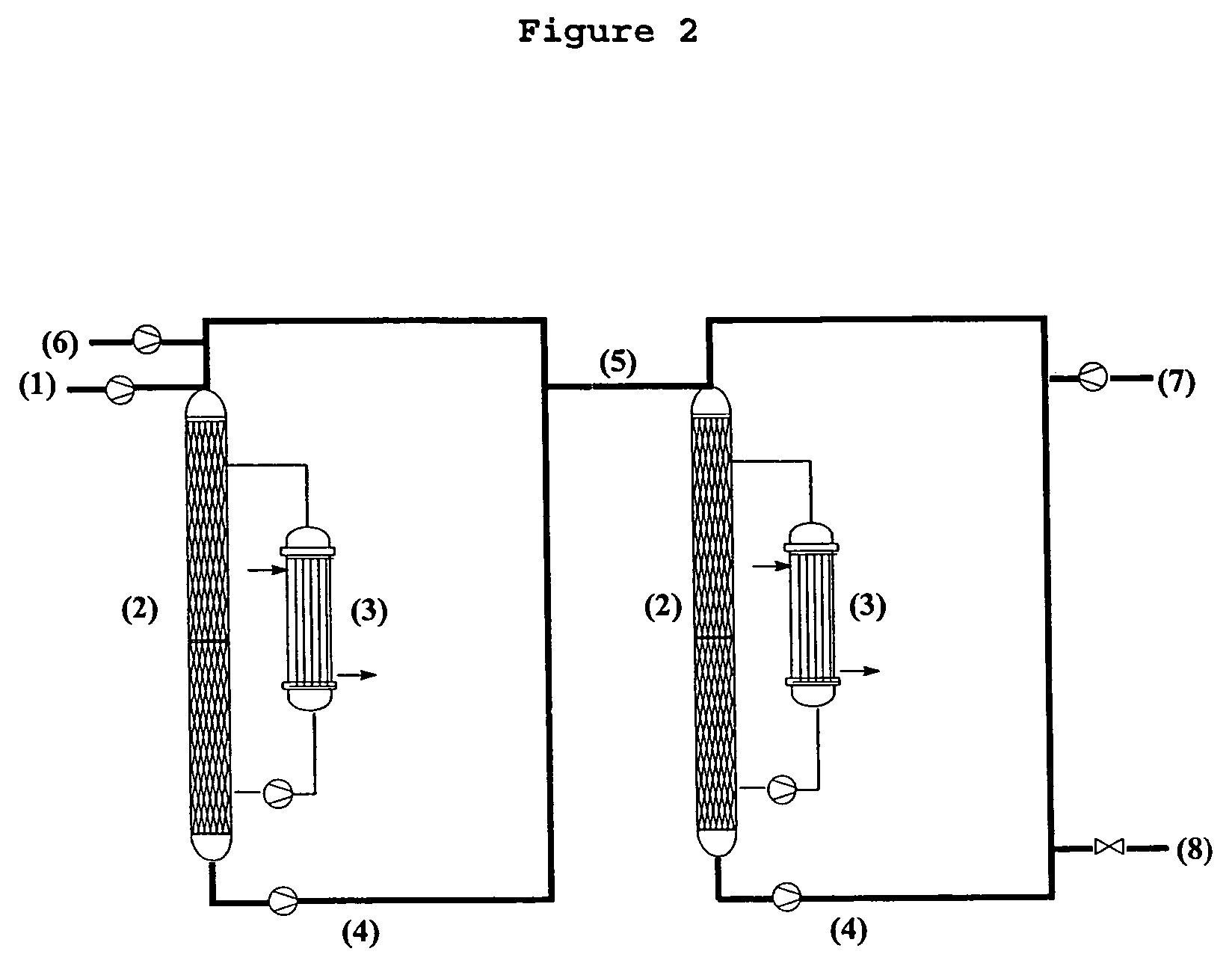Method for preparing 3-(methylthio)propanal
a technology of methylthiopropanal and propanel, which is applied in the preparation of carboxylic acid nitrile, organic compound preparation, organic chemistry, etc., can solve the problems of catalytic reaction loss and cannot be recovered
- Summary
- Abstract
- Description
- Claims
- Application Information
AI Technical Summary
Benefits of technology
Problems solved by technology
Method used
Image
Examples
example 1
Synthesis of dimethylaminomethylpolystyrene resin
[0028]5 g (4.5 mmol) of Merrifield resin [CAS 55844-94-5] (0.9 mmol Cl / g), 6.9 g (50 mmol) of triethylamine and 200 ml of dimethylamine solution (400 mmol, 2 M in tetrahydrofuran, THF) are charged into a commercially conventional laboratory autoclave. The mixture is heated at 85° C. for a period of 5 hours. After cooling and depressurising the mixture is filtered off by suction through a glass frit and the filter cake is washed first chloride-free with water, and then rewashed with 200 ml of THF. The resin dried at 60° C. can, after swelling, be used directly in the following experiments. This produces 4.8 g of product which consists according to NMR of >90% of the dimethylbenzylamine-functionalized resin. In addition to unreacted benzyl chloride, benzyl alcohol is a minor functionality.
Batchwise synthesis of 3-(methylthio)propanal
[0029]In a reaction flask having dropping funnel and gas introduction, 0.5 g of dimethylaminomethylpolyst...
example 2
2.1 Synthesis of diethylaminomethylpolystyrene resin
[0034]In a stirred flask having a reflux condenser, 30 g (27 mmol) of Merrifield resin [CAS 55844-94-5] (0.9 mmol Cl / g), 30.4 g (300 mmol) of triethylamine and 87.8 g (1.20 mol) of diethylamine are suspended in 420 ml of methyl isobutyl ketone. The mixture is kept at reflux for 6 hours. After it has cooled to room temperature it is filtered off by suction through a glass frit and the filtercake is washed chloride-free with water. The resin dried at 60° C. can, after swelling, be used directly in following experiments. This produces 32 g of product of which, according to NMR, >90% consists of the diethylbenzylamino-functionalized resin. In addition to unreacted benzyl chloride, benzyl alcohol is a minor functionality.
2.2 Batchwise synthesis of 3-(methylthio)propanal
[0035]Corresponding to the procedure of Example 1, 0.5 g of diethylaminomethylpolystyrene resin are reacted with acrolein and methylmercaptan.
[0036]After 2 hours this pro...
PUM
| Property | Measurement | Unit |
|---|---|---|
| temperatures | aaaaa | aaaaa |
| temperature | aaaaa | aaaaa |
| temperature | aaaaa | aaaaa |
Abstract
Description
Claims
Application Information
 Login to View More
Login to View More - R&D
- Intellectual Property
- Life Sciences
- Materials
- Tech Scout
- Unparalleled Data Quality
- Higher Quality Content
- 60% Fewer Hallucinations
Browse by: Latest US Patents, China's latest patents, Technical Efficacy Thesaurus, Application Domain, Technology Topic, Popular Technical Reports.
© 2025 PatSnap. All rights reserved.Legal|Privacy policy|Modern Slavery Act Transparency Statement|Sitemap|About US| Contact US: help@patsnap.com



